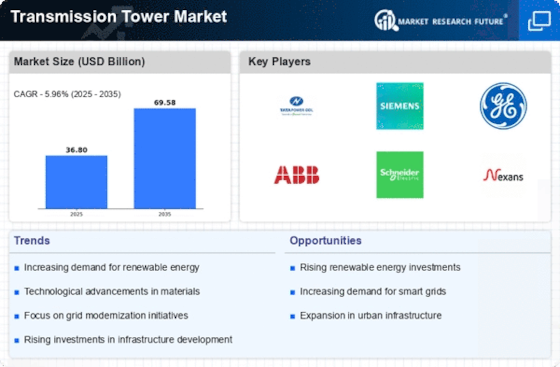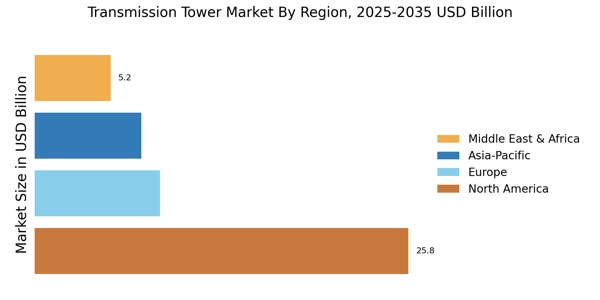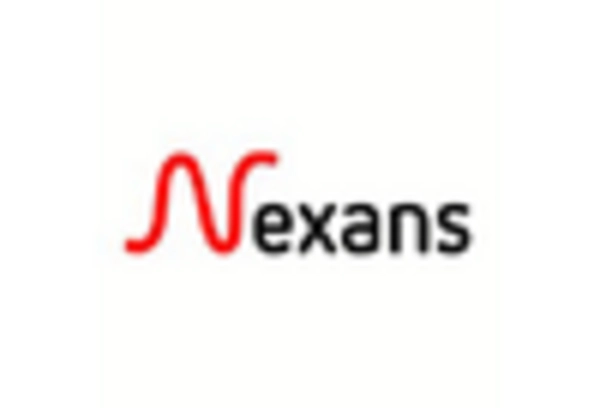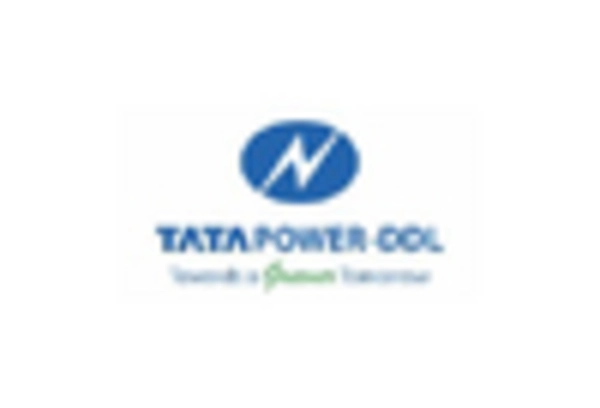Rising Demand for Electricity
The increasing demand for electricity across various sectors is a primary driver of the Transmission Tower Market. As urbanization accelerates and populations grow, the need for reliable power supply becomes paramount. According to recent data, electricity consumption is projected to rise by approximately 2.5% annually, necessitating the expansion of transmission networks. This surge in demand compels utility companies to invest in new transmission infrastructure, including towers, to ensure efficient power distribution. Consequently, the Transmission Tower Market is likely to experience substantial growth as utilities seek to enhance their transmission capabilities to meet this escalating demand.
Government Initiatives and Policies
Government initiatives and policies aimed at enhancing energy infrastructure play a crucial role in shaping the Transmission Tower Market. Many countries are implementing regulations that promote the development of new transmission lines to support renewable energy integration. For instance, incentives for building transmission infrastructure can lead to increased investments from private and public sectors. As a result, the Transmission Tower Market is likely to benefit from these favorable policies, which encourage the construction of new towers and the upgrading of existing ones to meet regulatory standards and support sustainable energy goals.
Investment in Smart Grid Technologies
The ongoing investment in smart grid technologies is significantly influencing the Transmission Tower Market. Smart grids facilitate improved energy management and distribution efficiency, which in turn drives the need for advanced transmission infrastructure. As governments and private entities allocate funds towards modernizing electrical grids, the demand for transmission towers equipped with smart technology is expected to rise. Reports indicate that the smart grid market could reach a valuation of over 100 billion dollars by 2026, thereby creating a favorable environment for the Transmission Tower Market to thrive as utilities upgrade their systems to accommodate these innovations.
Technological Innovations in Tower Design
Technological innovations in tower design are reshaping the Transmission Tower Market. Advances in materials and engineering techniques have led to the development of lighter, more durable towers that can withstand extreme weather conditions. These innovations not only enhance the reliability of transmission systems but also reduce construction and maintenance costs. As the industry embraces these advancements, the demand for modern transmission towers is expected to rise. Furthermore, the integration of advanced design technologies can lead to more efficient energy transmission, thereby positively impacting the overall performance of the Transmission Tower Market.
Growing Focus on Renewable Energy Integration
The Transmission Tower Industry. As countries strive to meet their renewable energy targets, the need for robust transmission networks to connect renewable energy sources to the grid becomes increasingly critical. The International Energy Agency has indicated that renewable energy capacity is expected to grow by over 50% in the next five years, necessitating the expansion of transmission infrastructure. This trend creates opportunities for the Transmission Tower Market, as new towers are required to facilitate the efficient transfer of energy from renewable sources to consumers.


















Leave a Comment